incl. VAT plus shipping costs
Immediate delivery, express possible ![]()
More than 20 Articles in stock
Delivery only innh. Germany and Austria possible.
Switch to the German store
- Item no: 7026
Fast delivery times
All products are in stock with us!14 years of breeding experience
Let our team of experts advise you!High customer satisfaction
from over 3,000 reviews "| Origin: | South America |
| Aquarium size: | 100 l (approx. 80cm) |
| Temperature: | 25-30 °C |
| Feature: | interesting brood care |
| with fish?: | Yes, with peaceful fish |
| Fish group: | Cichlids |
| Water values: | Soft water |
| Diet: | carnivore - meat eater |
| Pelvic region: | Below |
| Breeding: | medium |
| with shrimps?: | Socialization not possible |
| Difficulty: | 2 - Normal |
| Visual effect: | Especially colorful |
| Planting possible?: | Yes |
| with snails/shells?: | Yes |
| Final size: | 4-8 cm |
| Behavior: | Normal |
| with large crabs?: | No |
| with dwarf crabs?: | No |
| with crabs?: | No |
This colorful cichlid called Panduro's Dwarf Cichlid, with scientific name Apistogramma panduro, comes from South America. Apistogramma panduro is a very pretty and somewhat unusual South American. Males and females are very different in coloration, but in both sexes a black band, usually relatively indistinct, runs diagonally downward under the eye, and both males and females have an orange to red, sometimes interrupted, fringe on the caudal fin. Males have turquoise body coloration, and females are golden yellow with smaller to larger black spots. Male Panduros Dwarf Cichlids grow to 6-8 cm in size, while females remain much smaller at 4-5 cm.
Panduros Dwarf Cichlid lives in slow flowing black water bearing rivers in the Peruvian jungle. The bottom is usually densely covered with fallen leaves. These pretty and relatively compatible cichlids like to hide between driftwood and roots or in caves . Also in the aquarium you should offer your Panduros dwarf cichlids many hiding places and structure the aquarium nicely. A sandy substrate or sandy corner will allow them to forage for their food in a species appropriate manner by chewing sand. The edges of the aquarium should be well planted, but in the middle you leave space for swimming. The water in the aquarium should also be brownish in color with humic substances, and a blanket of floating plants will also dim the light somewhat. If no caves are available, this Apistogramma digs a gross tunnel, you should consider this when setting up the aquarium.
Panduros dwarf cichlids need soft to maximum medium hard water and a pH in the acidic to slightly acidic range. Humic substances are essential for the survival of the blackwater fish and should always be added. Aquarium temperatures of 22-28 °C are ideal for Apistogramma panduro .
The predominantly bottom-dwelling Apistogramma panduro can be kept very well with surface fish such as tetras , which also prefer soft and slightly acidic water in the aquarium. Shrimp are part of the dwarf cichlid's food spectrum and are inevitably considered food. Problems can arise with crayfish because they populate the same aquarium region, in particular there can be a dispute over the caves.
Apistogramma panduro should always be kept in pairs or in a harem, i.e. one male with several females. The aquarium should have from 80 cm edge length. Panduros dwarf cichlids can live in the aquarium for about 3 years.
The breeding of the unusual, very pretty and interesting Panduros dwarf cichlids is well possible in soft, acidic water. These Apistogramma are best bred in a species aquarium of at least 200 liters. During the spawning season the males are aggressive and very territorial. Each female needs her own breeding cave, as Apistogramma panduro are cave breeders. After mating, the females stick their clutches to the ceiling of a cave. There they perform brood care, while the male defends the territory from the outside. After hatching, the female continues to lead the fry for some time. After a few weeks the young fish become independent. Young Panduros need small live food. Initially they like to eat artemiauplia, but copepods and microworms are also suitable. If the temperature in the breeding tank is too high, the young fish will predominantly become males. Therefore the temperature should not exceed 25 °C.
Panduros dwarf cichlids search for food in the sand and chew the fine substrate systematically. They like to eat bottom dwellers like shiny worms or Tubifex, but they also eat good frozen food and can be accustomed to special food for carnivorous cichlids. We recommend NatureHolic Cichfeed for carnivorous cichlids. Shrimp sees this Apistogramma as food, small dwarf crayfish as well.
Our feed recommendation: The NatureHolic Cichfeed has a grain size of 1.5 mm and is therefore also suitable for larger fish. The NH Cichfeed is a soft granulate for mainly carnivorous fish. It has the same consistency as small crustaceans and insect larvae that fish naturally eat, and the soft granules protect the fish's mouth from micro-injuries that can result from hard feed granules.
Our plant recommendation: Use for planting NatureHolic InVitros. These are free of snails, planarians and other unwanted co-inhabitants. Also free of algae spores, bacteria and fungi.
Expert Tip: We recommend for fish keeping the NatureHolic 3 Phase Liquid. The care set offers the best all-round protection for your animals. It ensures optimal conditions for successful breeding and keeping.
| Scientific name | Apistogramma panduro |
| German Name: | Panduros dwarf cichlid |
| Difficulty level: | for advanced fishers |
| Origin/Distribution: | South America |
| Coloration: | Males and females both have a black band under the eye, usually relatively indistinct, extending obliquely downward, orange to red, sometimes interrupted fringe on the caudal fin. Males with turquoise body coloration, females golden yellow with smaller to larger black spots |
| Age expectancy | approx. 3 years |
| Water parameters: | GH 7 to 14, KH 3 to 8, pH 5.5 to 7, temperature 22 to 28 °C |
| Tank size: | from 100 cm for a small group of one male and several females |
| Food | Carnivorous, needs animal food: frozen and live food, and special food for carnivorous cichlids |
| Breeding | medium |
| Behavior | territorial |
| Group size | a group size of one male with 1-4 females is recommended |
| Further information | Ten typical aquarium fish for beginners and alternatives to them, Tips for acclimating fish to the aquarium, Feeding aquarium fish properly - cheap food and what it can do |
- Item no: 7026
- EAN No.: 7427061461855
Entdecke die Garnelio Welt!
Garnelio gehört zu den größten Onlineshops für wirbellose Aquarientiere weltweit.
Viele Artikel gibt es exklusiv nur bei uns im Shop.

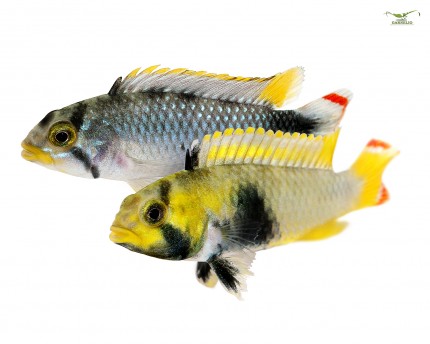




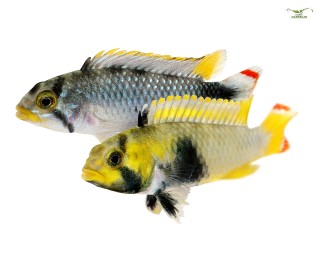


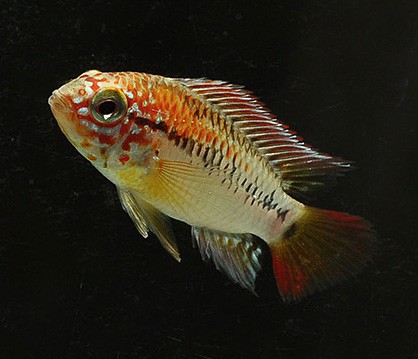

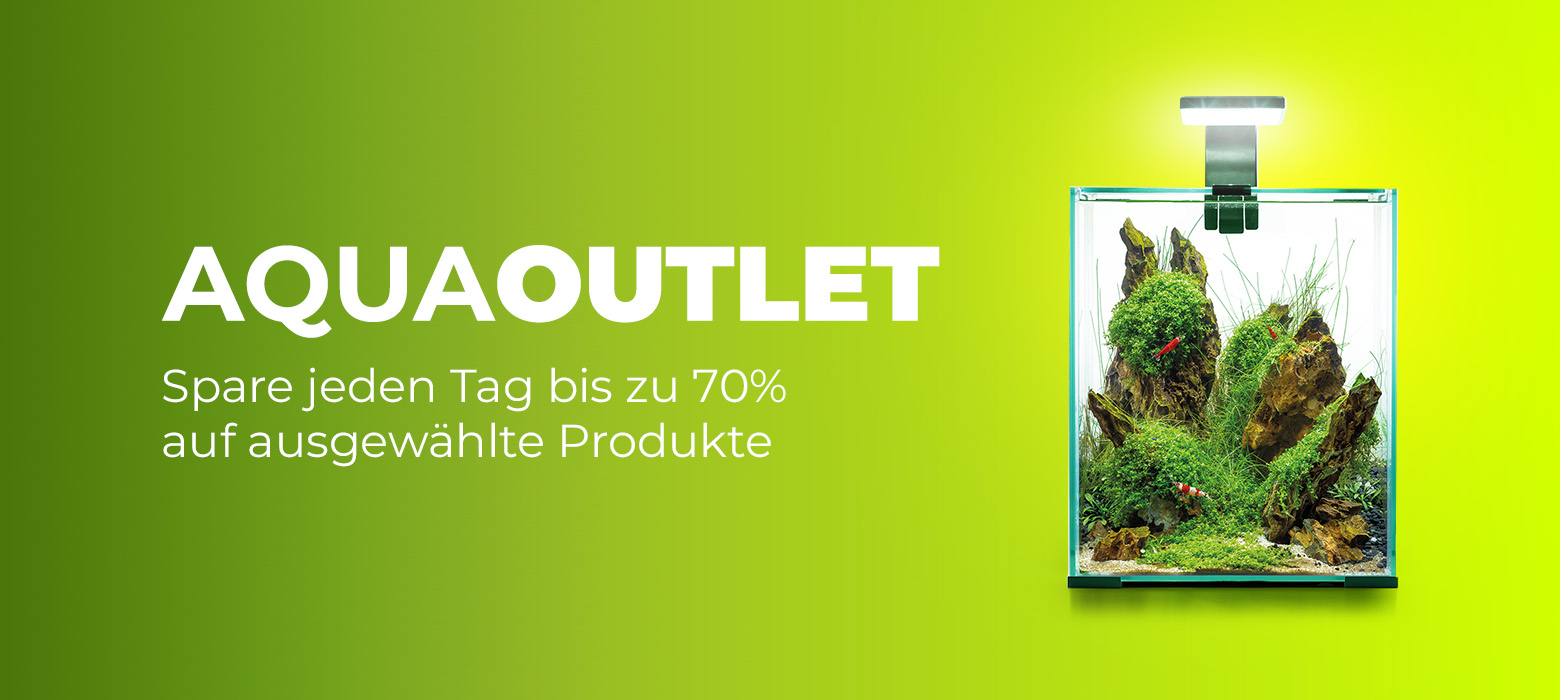



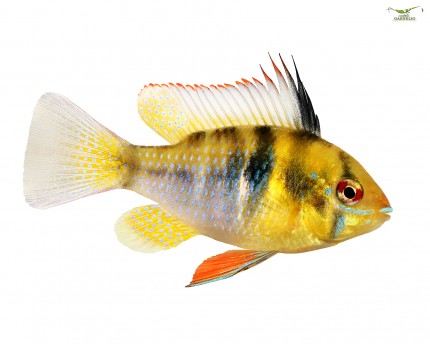
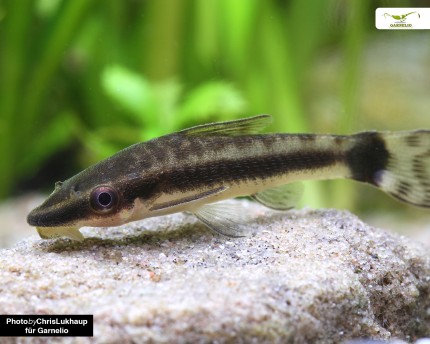
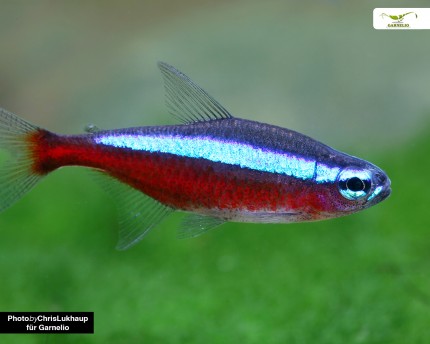
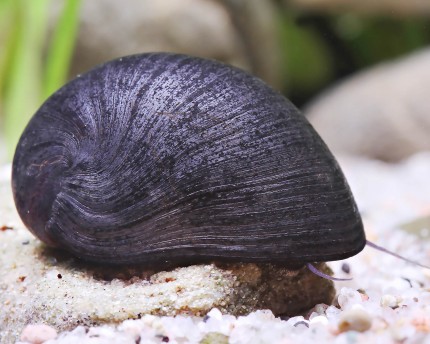
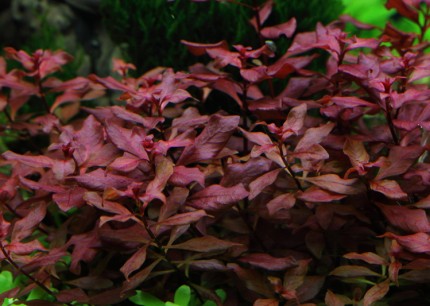
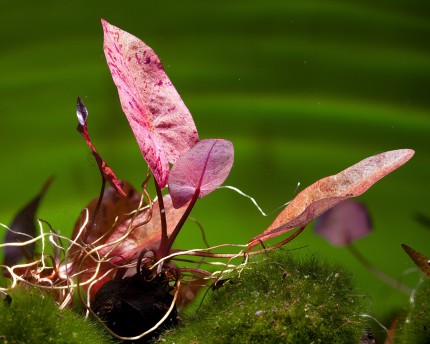
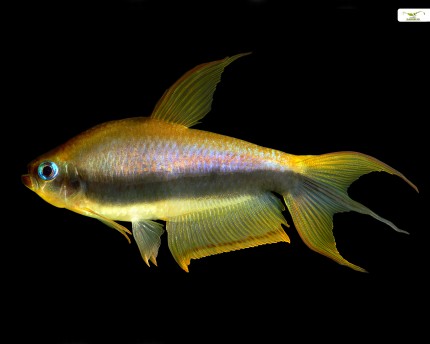
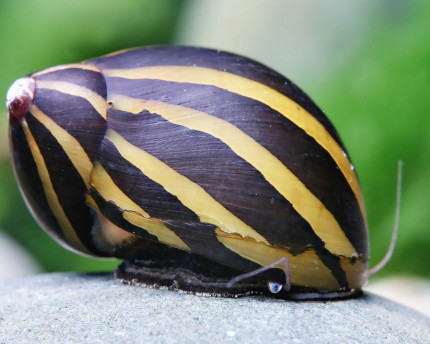
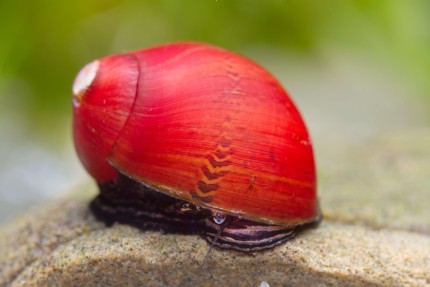
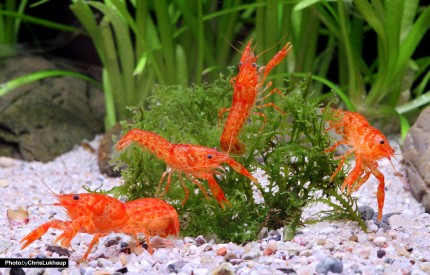
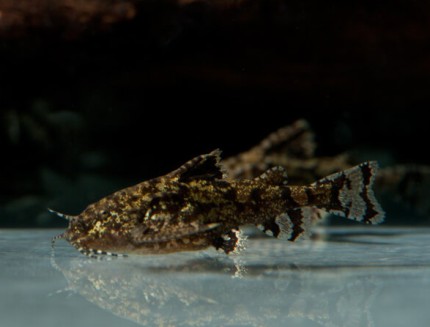
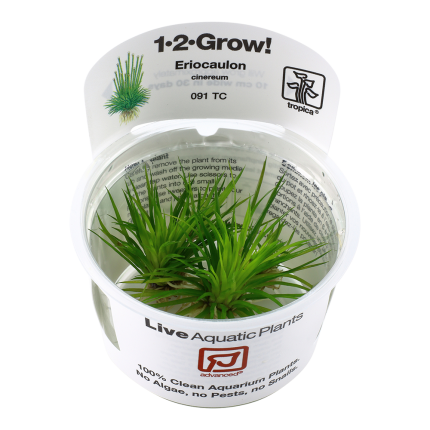
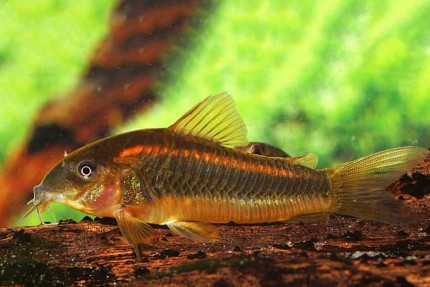

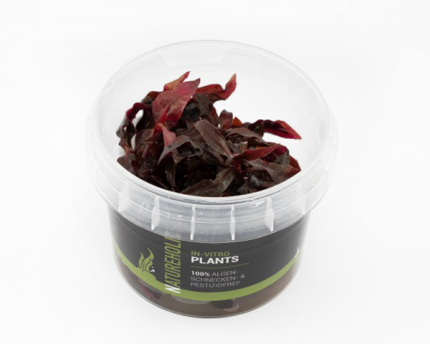
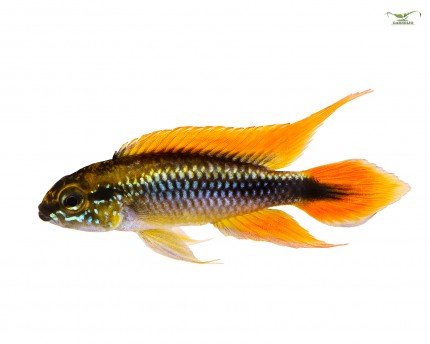
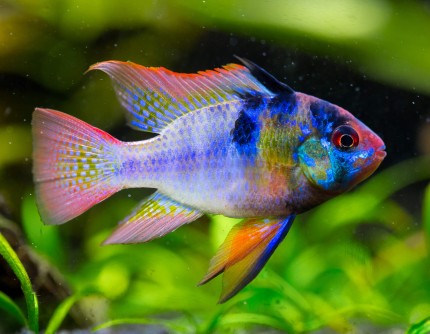
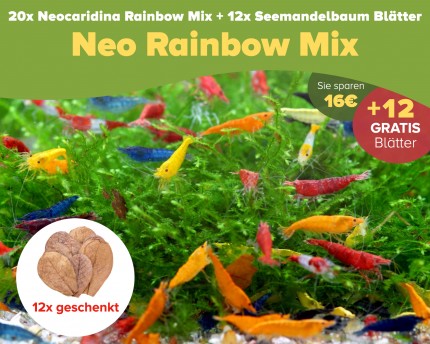
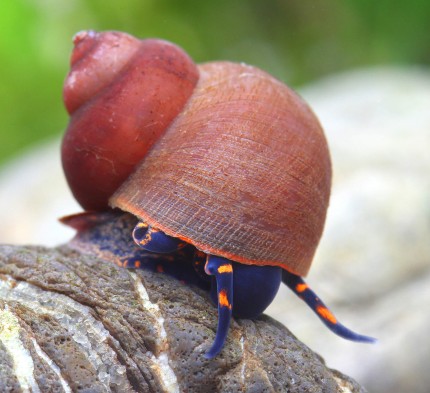
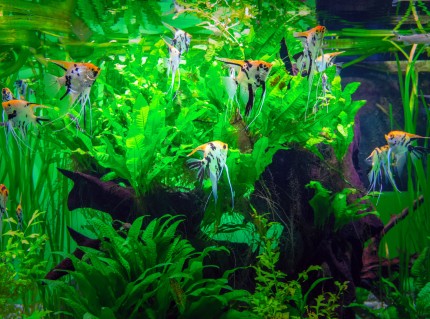
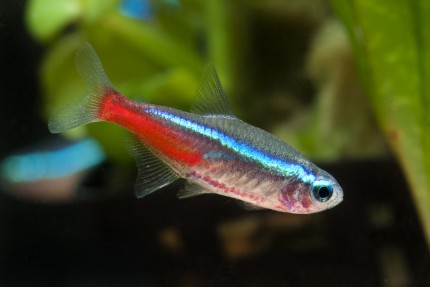
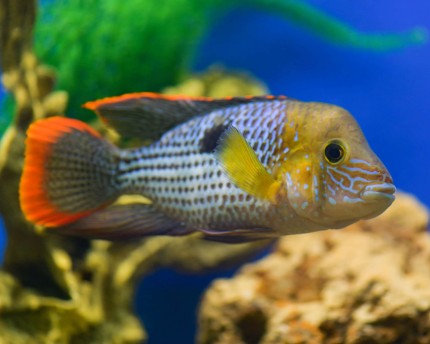
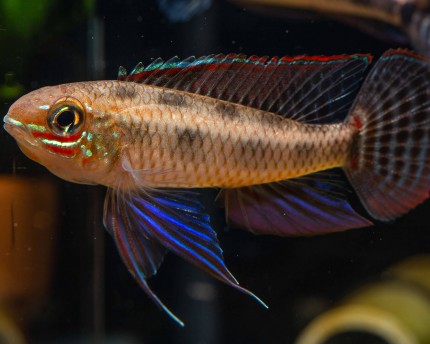


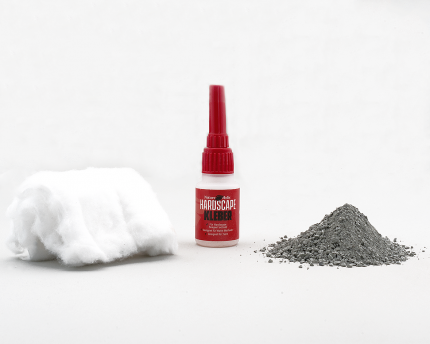
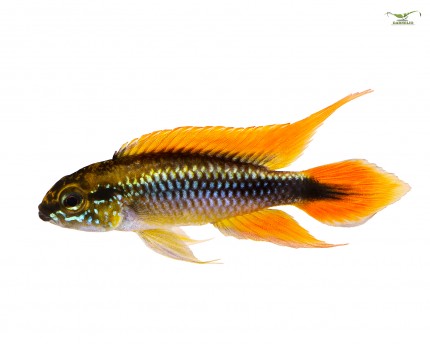
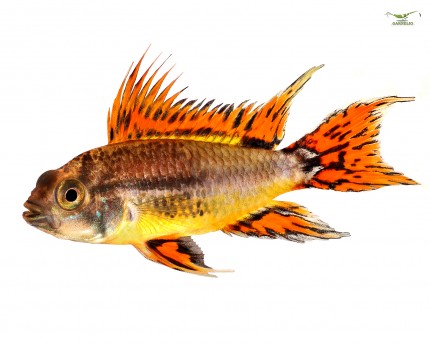
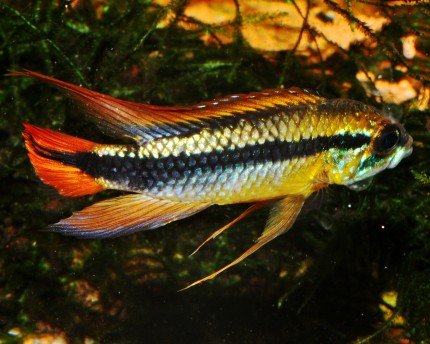
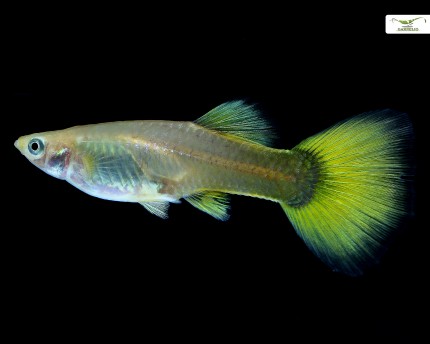
The fields marked with * are required.
I have taken note of the privacy policy.